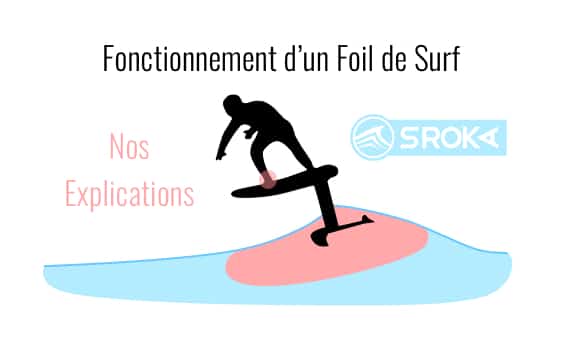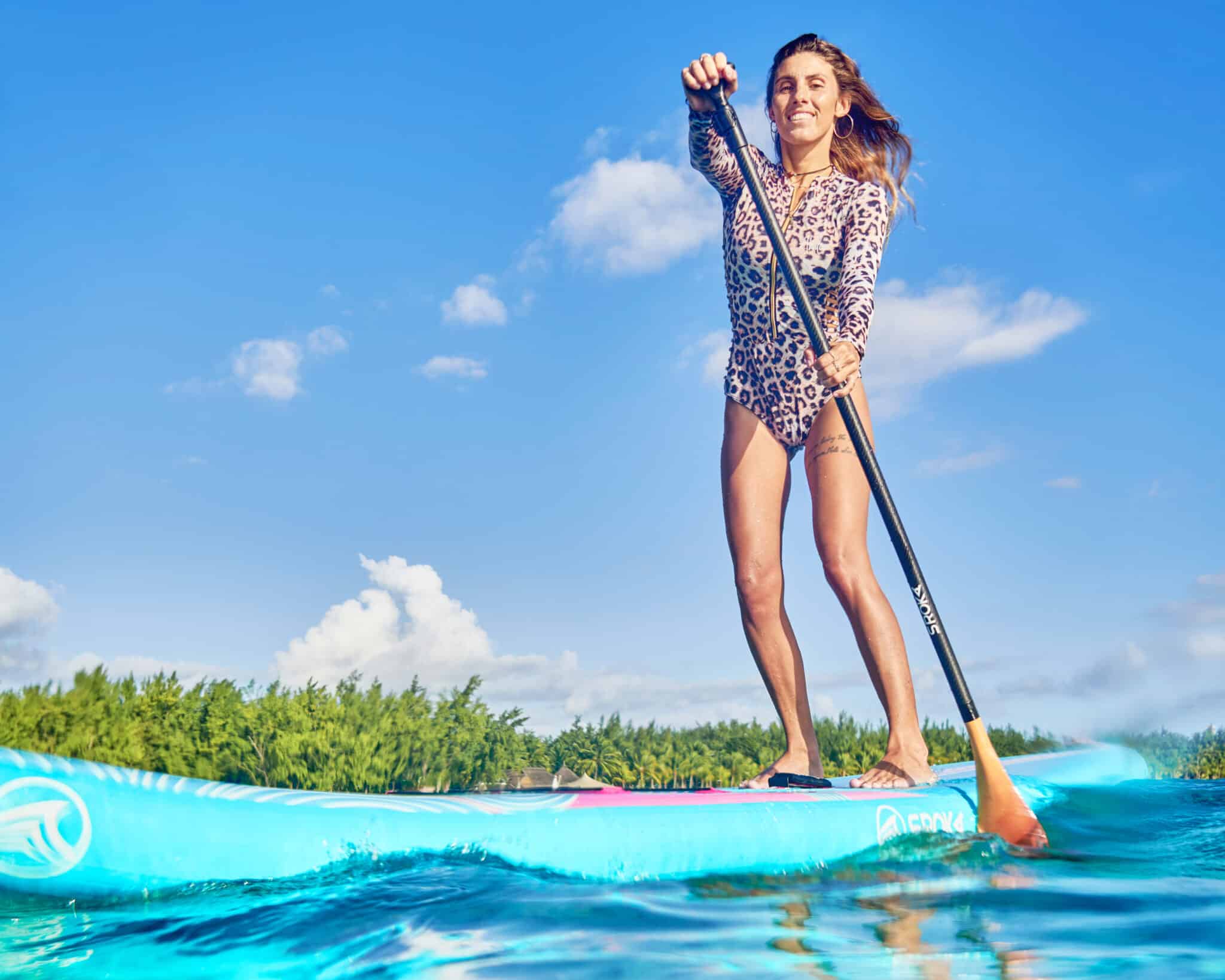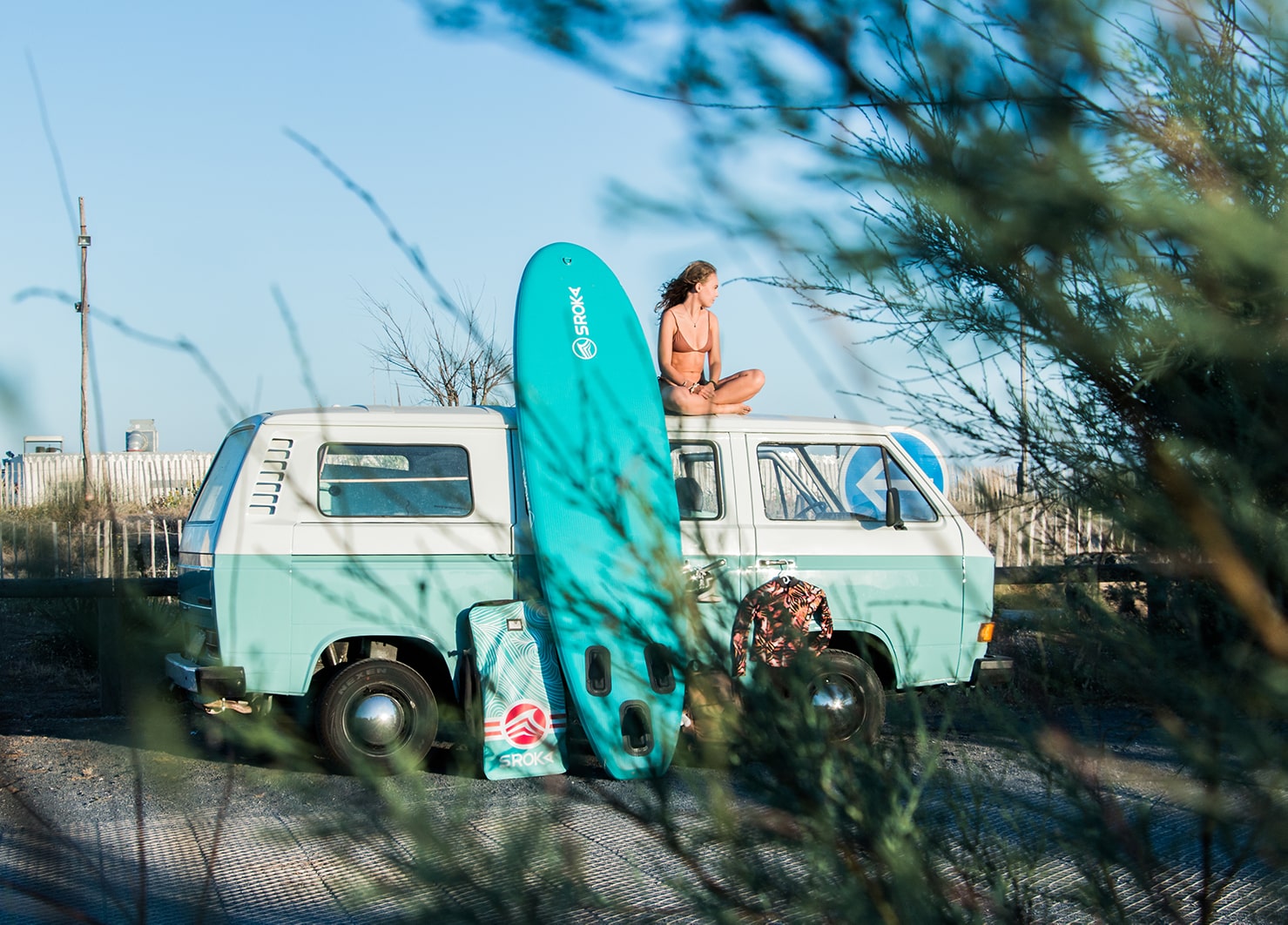Louis-Arnaud surf-foil in Mauritius, equipped with the Fast Flyer 4’6 board and the High Aspect 1190 Lift S-foil Summary Composition of a surf foil Principles …
How to sail in light wind in wingfoil?
The “light wind” in Wingfoil refers to the wind of light force to be moderated. That’s more or less 5 to 12 knots (about 9 to 22 km/h). These types of conditions may not be enough for most water sports, but not for wing foiling. How to sail in light wind with a wing foil? This requires learning and an optimal choice of your equipment.
In this article we will discuss different techniques and equipment choices to help you fly even sooner. Sailing in light wind in wingfoil is a unique experience, although at the beginning the practice was not necessarily very adapted to it, today, wingfoil starts at 5 knots and you can sail beyond 45 knots. The evolutions in terms of board, foil and wing have something to do with it, but so do the evolution of techniques.
The technical aspects of wingfoil sailing in light wind
Let’s talk about the aspect that will depend on you, because beyond the equipment, sailing in a wingfoil in light implies a certain technical level and some important notions.
Either pump you only with the wing, or pump you with only the foil and the board, or you learn to synchronize the pumping of the wing with the foil to be more efficient. When you try to answer the question of how to sail a wingfoil in light winds, you have to address the question of the technique of pumping in foil.
1. Wing pumping
The wing is the driving force of your practice, it is the element that allows you to move forward, so it seems obvious that its proper handling is also essential.
Pumping efficiently with a wing depends at first on the wing you are using, a more or less rigid wing will require a more or less long pumping frequency. Let your wing breathe! There is no need to “stuff” your wing by shaking it all over the place. Slowly pull it away from you and pull it dynamically, pressing the handles slightly downwards to bring it up at the end of the movement. Sailing in light wind therefore requires a kite with a taut spinnaker which will facilitate pumping.
2. Foil pumping
Pumping the foil requires practice, no one can do it without trying it so jump into the water and you will quickly understand the principle. As when you have speed, the general idea is to make the foil oscillate between front and back feet in order to give it speed. We then make a so-called “porpoising” movement to bounce the board on the water until the speed is sufficient to take off.
3. Synchronization of wing and foil pumping.
To leave early, you have to manage to synchronize the pumping of the wing and the foil at the same time. In lag, you will cancel out their effects, by synchronizing them you will get twice as effective. Stay as balanced as possible on the board. As you can see in the video, the rider is unbalanced at some point.
To try to synchronize the two movements, we advise you to practice on the flat. The moment you pull on your wing, you have to push your board and therefore the foil forward to allow you to gain more horizontal speed.
4. Position on the board
The position on the board is slightly different depending on the type of boards you have, but in general, put your weight on the front so that the board accelerates on the water to make it easier to take off. Some boards glide much better, so you have to let the board accelerate. Sometimes you have to push the board forward with your feet to help it pick up speed. This difference can be observed depending on the boards used. The thinner and longer the board, the easier it will be to pick up speed.
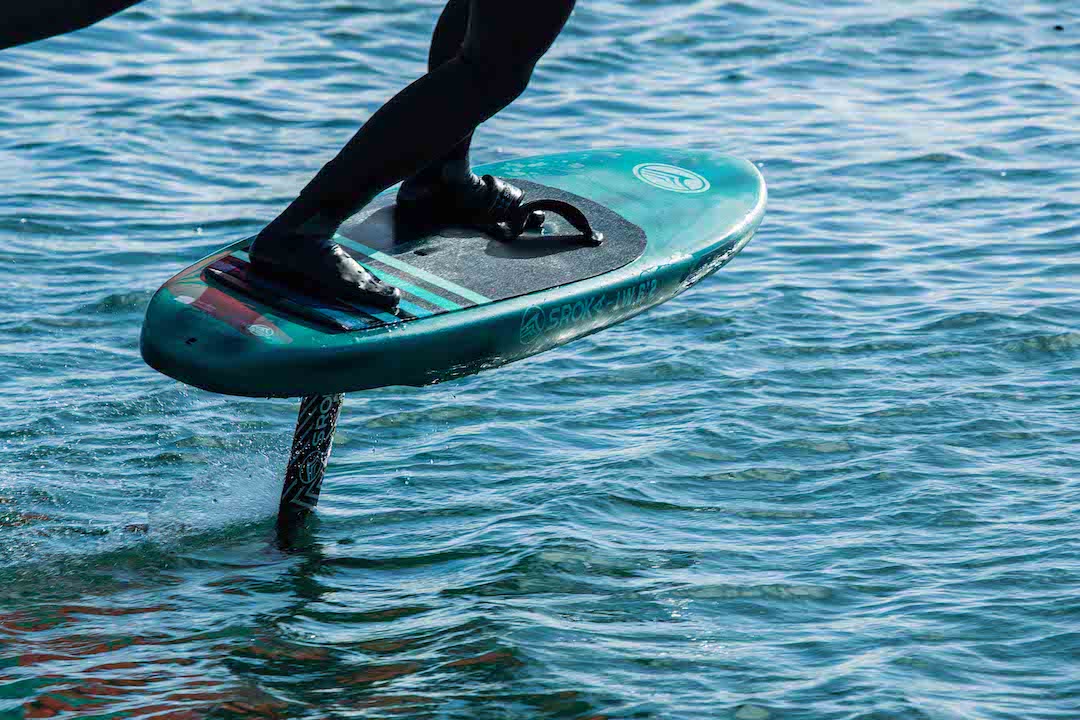
Equipment for wingfoil sailing in light wind
The equipment obviously plays an important part of your glide and your performance in the light. Wingfoil sailing in light wind will be determined by the choice of the right equipment.
Using THE right wing will increase your chances of flying before anyone else. Favor a wing with a thin but rigid leading edge like our new Dyneema Elite wing. The leading edge is a drag generator on the wing. The thicker the leading edge, the more drag it will hinder and therefore will not be the most effective. A thin leading edge significantly reduces drag and therefore allows you to start earlier, to go faster.
In terms of size, you will have to do your own tests to find out which surface suits you. Some prefer a large wing because it generates a lot of power and others play on the foil by keeping a small wing (or medium) and taking a larger foil. The effective solution to wingfoil sailing in light wind would seem to be, as much as possible, to reduce the size of the foil underwater because there is 800 times more drag in the water than in the air. In the second case, they can therefore afford to pump with a smaller wing which will give them more range of motion and with a greater foil power. Generally speaking, small people (less than 1m60) will avoid wings over 5m2.
If you are sailing on lakes, choose a large kite that will allow you to leave very early.
2. A specific board for wingfoil sailing in light wind
The board is the element that can totally be problematic to sail in wingfoil in light just as you liberate. Choose a long and narrow board that will allow you to slide a lot at the start. Which will allow you to fly effortlessly in ridiculously low winds. Our new DW and LW ranges are prime examples of the usefulness of a long, narrow board and allow access to the lightwind with ease while still performing very well.
However, this range is not recommended for beginners. So you’ll need to have a clear/confirmed level to use them.
Using straps will allow you to pull the board upwards in order to improve the pumping of it, especially with very light wind.
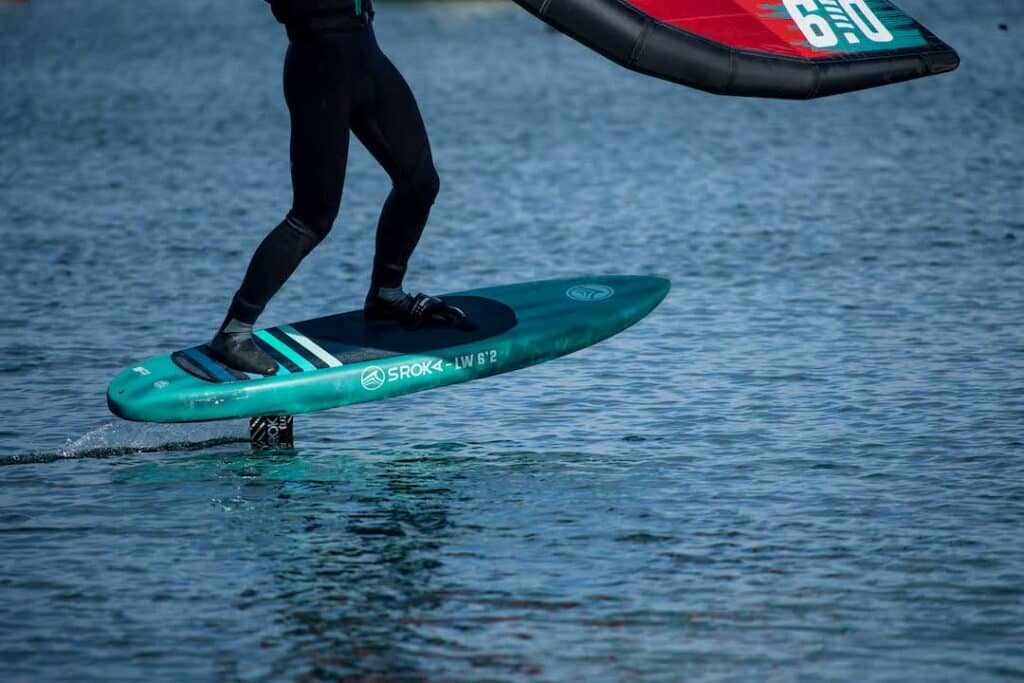
2. The foil
The board is the element that can totally be problematic as well as freeing you. Choose a long, narrow board that will allow you to glide at the start and therefore fly effortlessly and in ridiculously low winds. Our new DW and LW ranges are convincing examples of the usefulness of a long and narrow board and allow access to the lightwind with ease but still performance.
However, this range is not recommended for beginners. So you will have to have a level of knowledge to use them.
Using straps will allow you to pull the board upwards in order to improve the pumping of it, especially with very light wind.
The foil is the element that comes into play just before taking off, once the board and the wing have given speed, it enters the scene and allows the take-off. A foil with a high ratio allows for a smooth take-off and tolerates low speeds very well depending on a more or less thick profile. A properly adapted foil will above all ensure that you do not make the slightest mistake when you are in flight.
To sum up, the choice of material
- Choose a foil with a good wingspan to leave early
- Take a thin, long and narrow board like the LW range from SROKA
- If you want to sail in light wind conditions, opt for a kite of 6 m or more to be sure to leave very early.
Wing foiling in light wind can be learned: Observation of the water
1. Currents and waves
Using the current and/or the waves will allow you to potentially take off sooner as there would be any, of course.
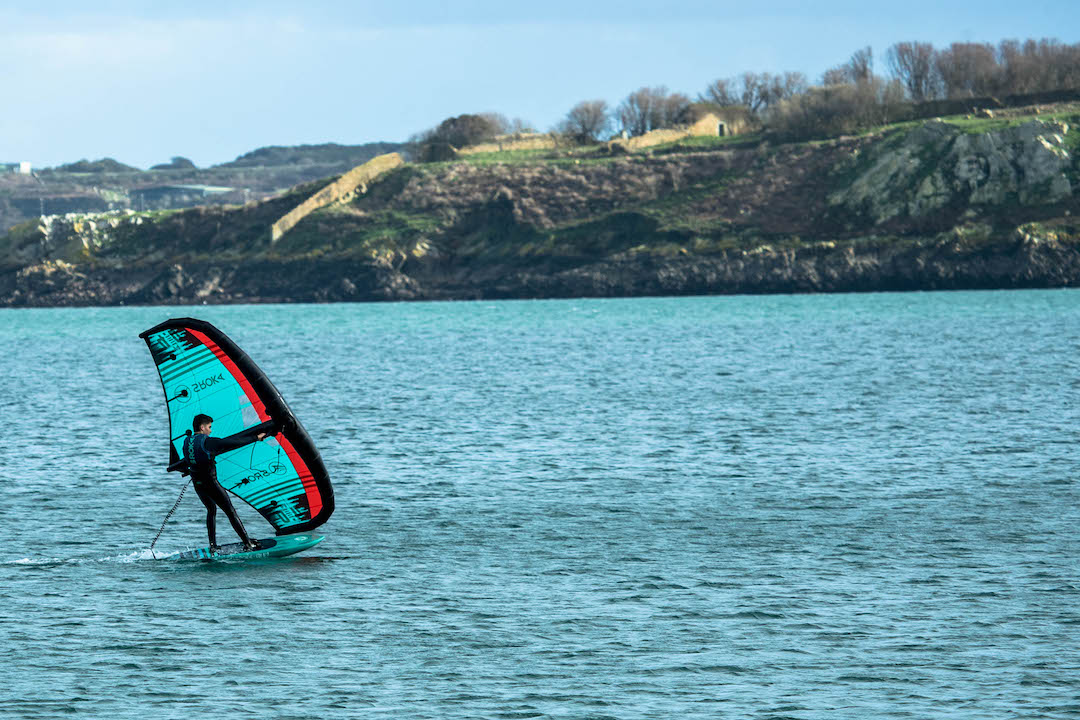
2. Laughing stock
Observing the body of water can be learned, practice spotting the breezes on the water! To help you, the stronger the breeze, the duller and darker the body of water will appear. Use these breezes to take off and learn to anticipate them. By synchronizing the arrival of the breeze and your pumping, you will leave earlier.
Once in the air
The take-off is the difficult and technical part of the light wind, but once in the air, make sure you don’t make stupid mistakes that would force you to start again, make sure you are stable, that you have mastered your foil and that you are able to do the maneuvers necessary for your practice.
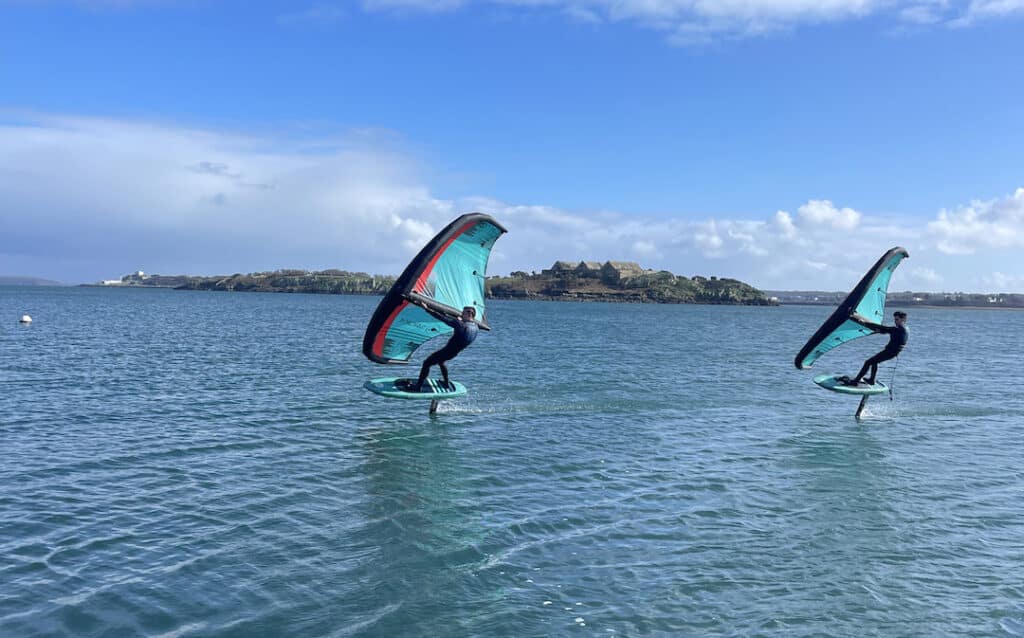
In conclusion, the winging lightwind is accessible to all riders of a “jibe” level, make sure to put the equipment on your side by choosing the right equipment that will allow you to optimize the low range, namely: a relatively large kite, a foil with a significant aspect ratio and a thin and long board to increase the glide. Not to mention that you will have to train and master the board/wing pumping technique as best as possible to make your sessions a success and be “the one who flies in nothing” and who annoys everyone in the process.
If you still have questions about this, or for any other request, please do not hesitate to contact us !
Article you may be interested in
Did you know that paddle boarding is a great way to strengthen your body? Not only does this activity allow you to escape on the …
Are you looking for an inflatable paddle board for the summer to sail at sea or in lakes? The inflatable paddle board really has a …
What is Wing Foil? Wing Foil is the latest in board sports. This consists of manipulating a wing held with both hands (“wing”) with a …

